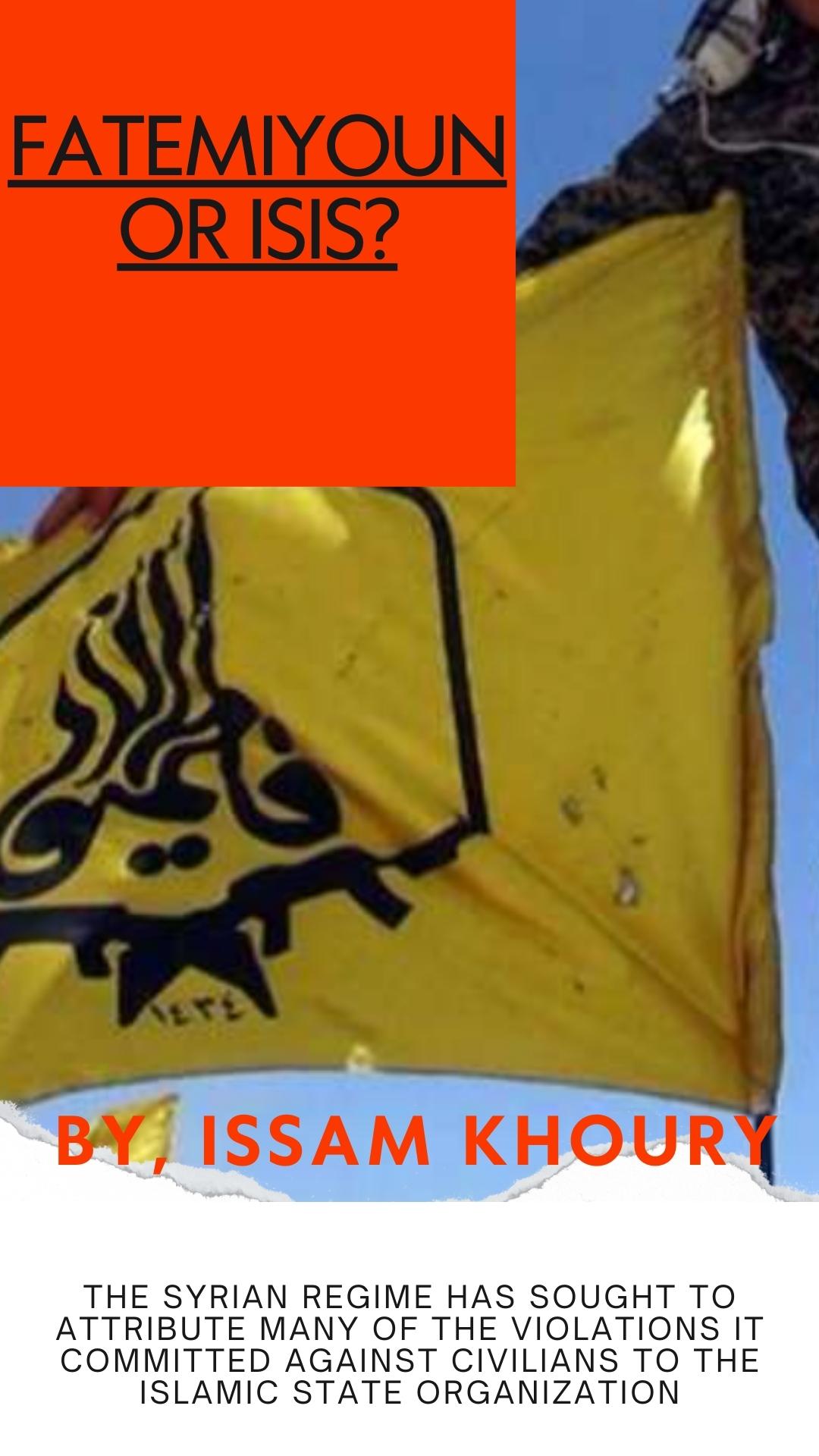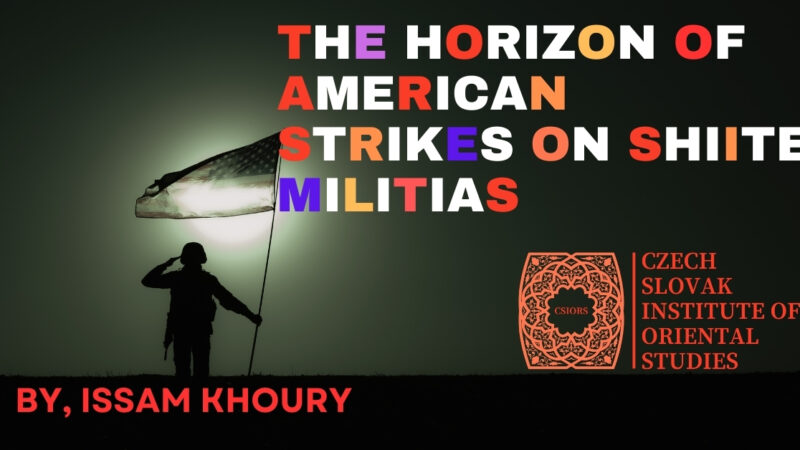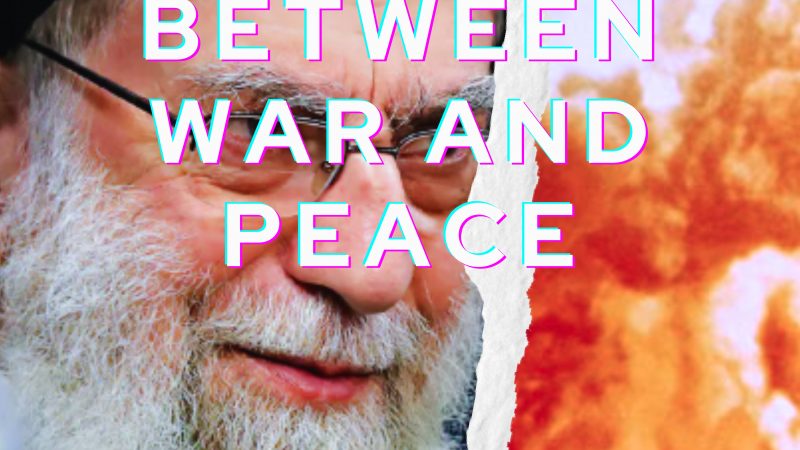Fatemiyoun or ISIS?

By, Issam Khoury
CSIORS, April 2023
Since the outbreak of the Syrian revolution, the Syrian regime has sought to attribute many of the violations it committed against civilians to the Islamic State organization, as this organization has become a brand that attracts all inhuman phenomena. The international community was ready to receive criticism towards this terrorist organization without scrutinizing and delving into these violations. Because of the danger, it caused those countries’ national security.
Perhaps the last of these violations was the killing of 53 individuals in the Al-Sukhna[1] area in the Syrian Badia[2] on February 17, 2023. The Syrian News Agency announced this news on its official website[3], indicating that the terrorist organization ISIS killed 53 people Terfeziaceae pickers (truffles) with gunshots in the head, and burned their cars.
Indeed, some sleeper cells of ISIS are still active in the Syrian Badia region, specifically in the vicinity of Salamieh[4] and Palmyra[5]. Still, these cells did not clash with the Bani Khalid clan, which is spread in the two regions (Al-Rukban camp and the town of Al-Sukhna) in the Syrian Badia, unlike the fighters of the Islamic State They view the Bani Khaled clan and other clans of the Syrian desert as a human group that has been robbed of their rights due to the domination of the Liwa Fatemiyoun[6], which is supported by the Iranian Revolutionary Guards, over their areas.
In fact, ISIS operations were concentrated, when it was at the height of its power, against the Syrian regime in the areas of Salamiyah-Palmyra, and in the Al-Shaer fields area, which contains the Syrian gas fields. In those areas, there are military units of the Syrian army, which ISIS invests in strengthening its military capabilities after I stole it, but after the collapse of ISIS and the killing of its most prominent leaders, ISIS operations became very rare and were limited to raiding some members of the army returning from the areas of Deir Ezzor to Damascus, in order to clear them of their ammunition and individual weapons.
Therefore, the possibility of ISIS killing poor people, who are interested in collecting agricultural truffles, in order to sell them in the markets of Homs for a modest amount, is very unlikely. And if the gunmen are thieves claiming to be loyal to ISIS, why would they kill unarmed people? While they can strip them of truffles, especially since the price of bullets is higher than the price of truffles!
Also, if they were thieves, why would they burn the cars of the truffle collectors, they could have used those cars or dismantled them, and sold them in the market as spare parts, and certainly, the price of those cars is higher than the price of truffles.
From a technical point of view, ISIS used to kill its military opponents with live bullets during battles. As for the poor, defenseless citizens, the process of killing them is very unlikely. All the people of the Bani Khaled tribe are known to not support the Syrian regime, so the order to kill them by ISIS on charges of treason is impossible, and if there is real treason, the punishment mechanism according to the norms of the Islamic State organization is cutting off the head from the body with a sharp knife, or with the sword, which was not done. This makes us deny the accusation that the Islamic State organization killed these poor people from the Bani Khaled tribe.

And if we look at the statement of this clan issued on February 18, 2023, we see a direct accusation by them against the Liwa Fatemiyoun, as it was announced by the Bani Khaled clan that 75 civilians were killed in that massacre, and not 53 personalities as the Syrian regime claimed, and after we obtained a video It documents the corpses of the victims, and it turns out that most of these victims were shot in the head, and this indicates that they were not subjected to a state of physical violence before the killing process, but they were threatened with the aim of gathering them in one place, and then they were executed with live bullets, and technically this method intersects with the behavior of the regime Syrian and Iranian militias, as happened in the Tadamon[7] massacre[8], which was documented as a war crime.
Truffle collectors used to sell this product to members of the Fourth Division of the Syrian Army, at an amount of 80 thousand Syrian pounds per kilogram, which means that the members of the Fourth Division achieve a financial profit of approximately one hundred thousand Syrian pounds for every one kilogram, without any effort or fatigue. Therefore, they are not obliged to kill these poor people, which means that the Liwa Fatemiyounis the group most accused of the killing, for several reasons, the most prominent of which are:
Iranian weapons:
Al-Sukhna area in the Syrian desert is a concentration area for the Liwa Fatemiyoun funded by the Iranian Revolutionary Guards, and the Al- Sukhnah area is characterized by the presence of many caves in its terrain.
The fighters of the Liwa Fatemiyoun have dug many tunnels in that area, to be the most important security points extending between the province of Deir -Ezzor and Homs, as well as put many mines, in areas that we believe are storage centers for weapons smuggled from Iran towards Syria, via Iraq’s land route.
Usually, truffles grow at the edges of the caves because they need shade, so the reason for the assassination of the truffle collectors may be that they approached those caves, which made them aware of the Iranian weapons storage sites inside Syria.
Religious extremism:
The Liwa Fatemiyoun is extremist in its ideas against the Sunnis, and the Iranian Shiites used it as an advanced tool for them in Afghanistan to defend the Afghan Shiites. Therefore, they are very extremist towards the Sunni groups, especially the poor among them, who do not enjoy media support, which makes the process of human liquidation of the sons of The Bani Khaled clan, the opponents of the Syrian regime, a matter of religious and security justification, especially since they are in constant contact with them by virtue of their geographical location.
Investing in ISIS:
The major task of the international anti-terrorist coalition, stationed in Area 55 or the Al-Tanf base, is to eliminate the Islamic State, while the Israelis’ major task is to cut off the land military supply bridge from Tehran towards Syria, so the Liwa Fatemiyoun is a target group, as well as all the Shiite radical organizations funded by the Iranian Revolutionary Guard.
Therefore, if the ISIS terrorist cells are eliminated, the priority of the international anti-terrorist coalition may shift to cooperation with the Israelis to eliminate the Shiite militias. From here, the Liwa Fatemiyoun may seek to carry out terrorist operations and attach them to the Islamic State, in order to delay the process of its liquidation by the Americans and the Israelis.
The previous three reasons may be, individually or collectively, a motive for us, in order to enhance our verification of any operations attributed by the media to the Islamic State, as the beneficiary of these operations is not only the Islamic State but there is a regional power, the most prominent of which is Tehran, in addition to the Syrian regime that seeks to portray itself as a political regime, but a not radical extremist group, although this regime made many war crimes and genocide and these massacres exceeded the crimes of extremist radical groups.
[1] Al-Sukhnah is a town in eastern Syria under the administration of the Homs Governorate, located east of Homs in the Syrian Desert. Nearby localities include Mayadin and al-Asharah to the east, al-Taybah and Raqqa to the north, Salamieh to the west, and Arak and Palmyra to the southwest.
[2] The Syrian Desert, also known as the North Arabian Desert, the Jordanian Steppe, or the Badiya, is a region of desert, semi-desert, and steppe covering 500,000 square kilometers of the Middle East, including parts of southern Syria, eastern Jordan, northern Saudi Arabia, and western Iraq.
[3] https://sana.sy/?p=1842964
[4] Salamieh is a city and district in western Syria, in the Hama Governorate. It is located 33 kilometers southeast of Hama, and 45 kilometers northeast of Homs.
[5] Palmyra is an ancient city in present-day Homs Governorate, Syria. Archaeological finds date back to the Neolithic period, and documents first mention the city in the early second millennium BC.
[6] Liwa Fatemiyoun, literally “Fatimid Banner”, also known as Fatemiyoun Division or Fatemiyoun Brigade, is an Afghan Shia militia formed in 2014 to fight in Syria on the side of the Syrian government.
[7] The Guardian, by Martin Chulov, Middle East correspondent, 26 Apr 2022
https://www.theguardian.com/world/2022/apr/27/massacre-in-tadamon-how-two-academics-hunted-down-a-syrian-war-criminal


